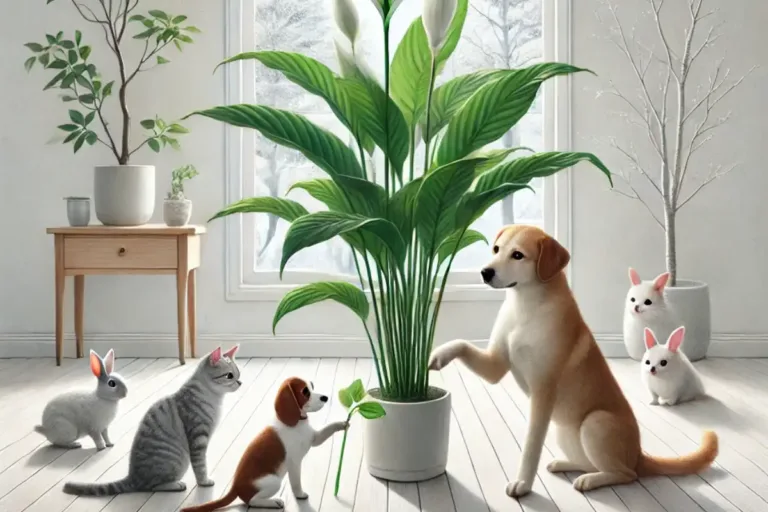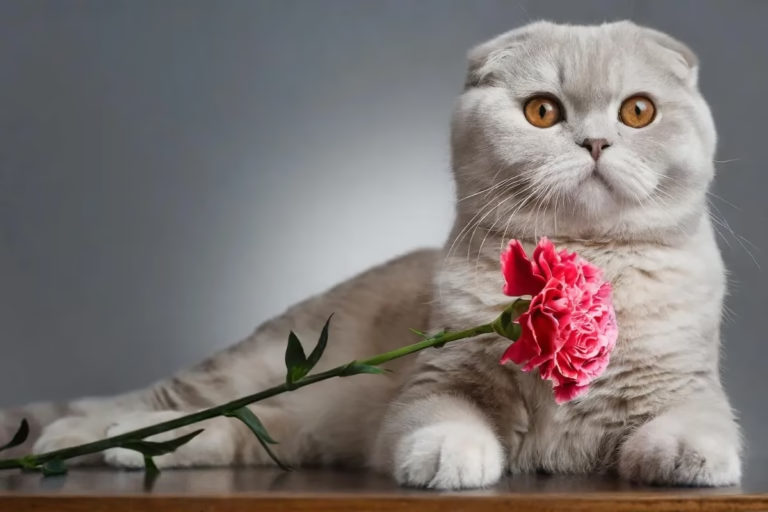Prayer Plant Toxic to Cats – A Pet-Friendly Houseplant Guide
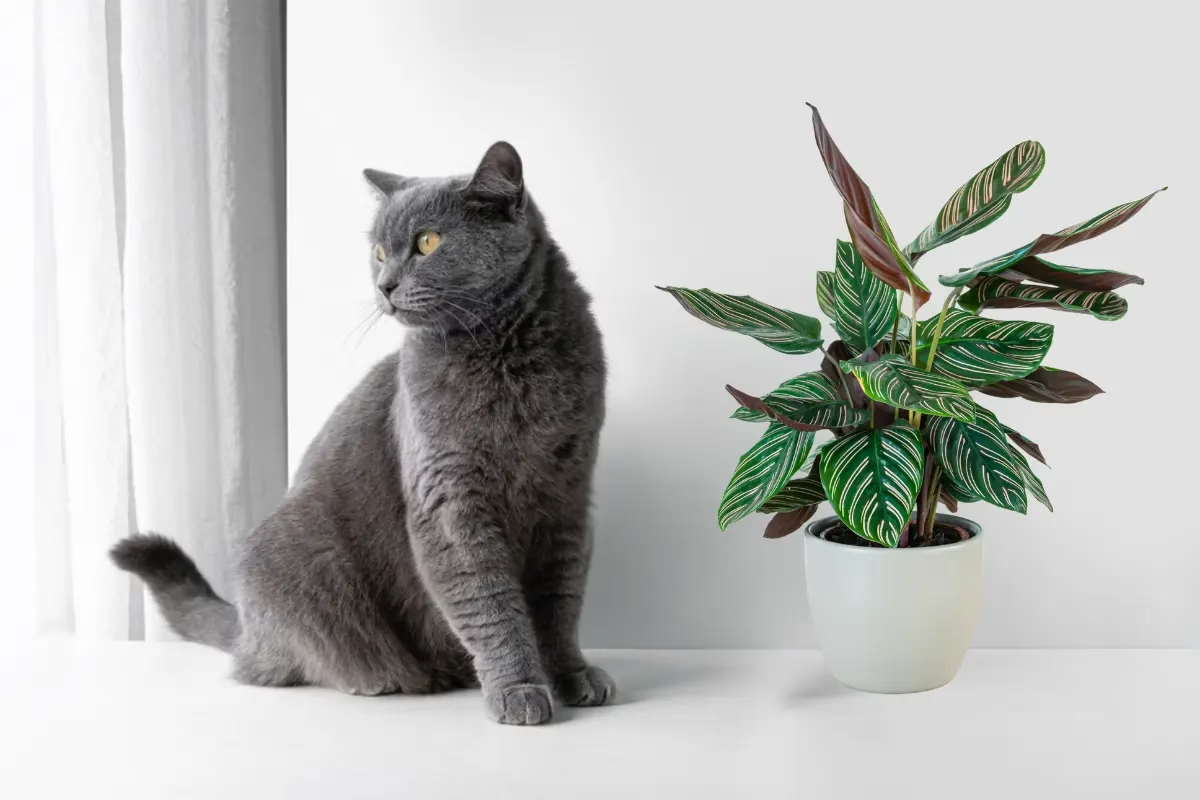
Prayer plants scientifically called Maranta leuconeura are a favorite among houseplant lovers. for good reason—those bold, patterned leaves and the way they fold up at night? Stunning. They bring life, texture, and movement to any shelf or windowsill. But if you’re a cat owner, safety win over decor. The big question isn’t how pretty they are—it’s this: Are prayer plants toxic to cats, or could they be safe for your curious little sidekick? Let’s dive into the details and break down the facts—backed by real cases, not just internet guesses.
Quick Answer
The prayer plant is listed as non-toxic to cats by the ASPCA, so a small nibble is usually harmless. However, excessive consumption of its fibrous content can lead to digestive upset, including vomiting or diarrhea. The level of discomfort often depends on how much was ingested and your cat’s immune system.
Prayer Plant: A Houseplant with Personality
Origins & features
The prayer plant look outstand due to it’s vibrant green leaves with prominent veins and colorful spots that look amazing. What’s really cool is its natural behavior—the leaves fold up at night like they’re in prayer, which is actually called nyctinasty.

Even though it comes from the tropical forests of Brazil, it’s super adaptable to normal household conditions, does well in warm and humid environments, and with its resilience and low-maintenance nature, it works for both beginners and seasoned plant owners.
Why Prayer Plant Is So Popular?
The prayer plant has seen growing popularity, especially among indoor plant enthusiasts. People love it for modern, nature-inspired spaces because it looks unique and has this cool, natural movement.
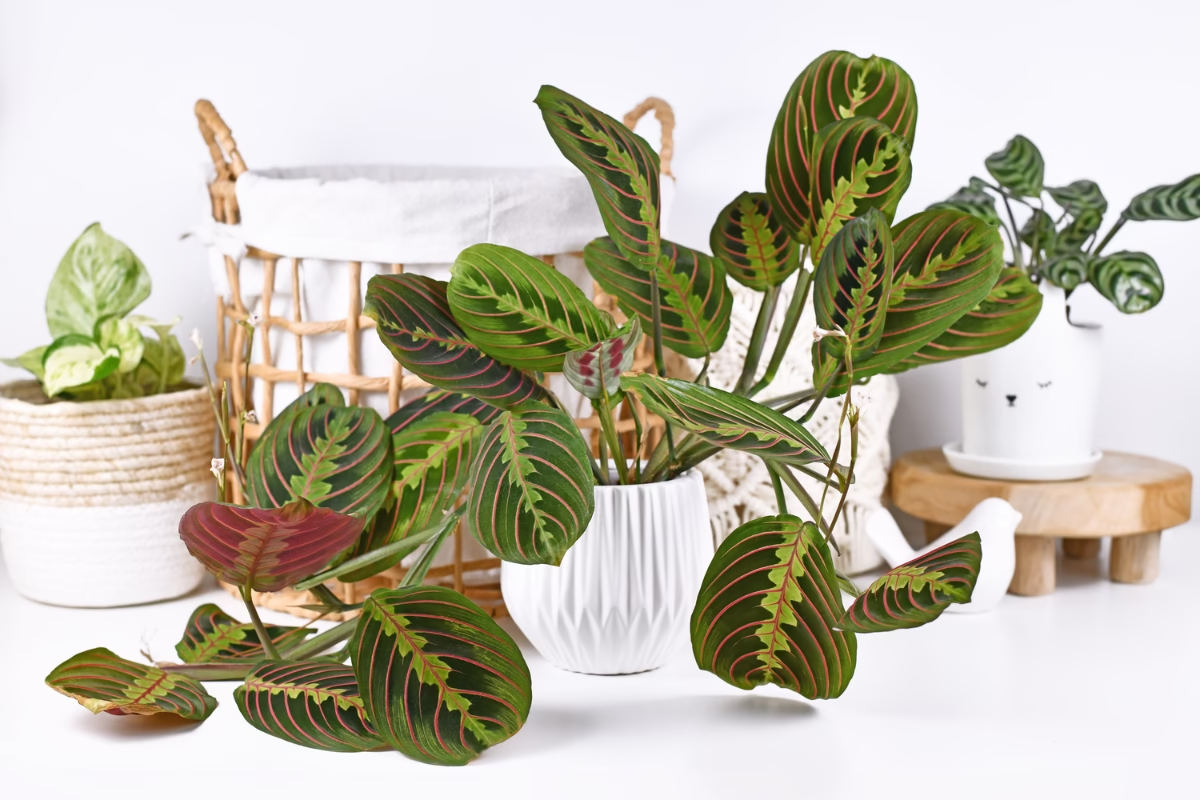
It brings a dynamic element and strong visual appeal to any room, easily elevating home decor. Plus, it’s adaptable and easy to care for, which fits perfectly with the biophilic trend—bringing the beauty of nature indoors in a simple, stylish way.
Understanding Housplants Toxicity
What indoor Plant Toxicity means?
Plant toxicity indicate the presence of some harmful compounds that can cause negative reactions. When humans or animals are exposed to or ingest these poisonous compounds, they can cause skin irritation, digestive issues, or neurological symptoms (in rare cases). Not all indoor plants, but knowing their toxicity level helps you make safer plant choices for your space.
Pet Safety and Toxic Plants
If you’re a cat owner, you’ll definitely choose safety over greenery. As much as we love filling our homes with beautiful household plants, some can be dangerous for our pets. Cats are naturally curious—their grooming habits or random nibbling can lead to ingesting something harmful.
A few leaves may seem harmless, but they can carry serious toxic risks and health hazards. That’s why pet owners should make informed choices and go for non-toxic, safe options to protect their feline friends.
Related: Is ZZ Plant Toxic to Cats?
Prayer Plant Vs Cats: Safety, Symptoms & Real Case Study
Are Prayer Plants Toxic to cats?
The big question for every cat lover: “Is the prayer plant toxic to my cat?”
The simple answer is no—it’s not toxic. According to the ASPCA, the Maranta Leuconeura doesn’t contain anything harmful to cats, so even if your kitty takes a nibble, it won’t cause serious harm. That said, a caring pet parent always keeps an eye out—just to be on the safe side.
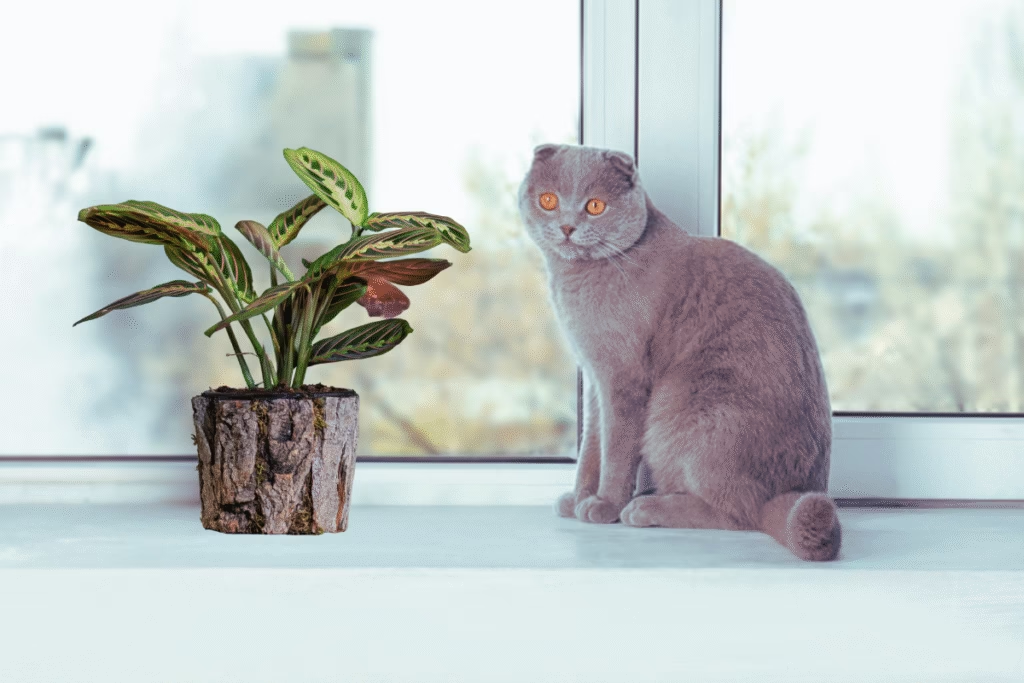
Why Non-Toxic Doesn’t Mean 100% Safe
The prayer plant may be non-toxic, but excess of everything is bad—even safe plants. If your cat chews on too much, the plant’s fibrous leaves can irritate their stomach, leading to vomiting, diarrhea, or other digestive issues.
The level of harm depends on the amount of plant consumed and your furry friend’s immunity. It’s not about toxins, but about how a sensitive system reacts. Watching your cat’s nibbling habits can help prevent unnecessary discomfort.
Why Do Cats Chew on Prayer Plants?
Some cats chew houseplants like the Prayer Plant for the fiber, which can ease gastrointestinal discomfort. Others do it out of habit, liking the texture. But sometimes it’s linked to cat behavior issues like anxiety, displacement behavior, or OCD (Obsessive-Compulsive Disorder).
Symptoms of Discomfort in Cats
Even though the Maranta leuconeura is labeled Cat-Safe, but some furry friends have more sensitive systems things can get tricky. If your cat chews on the leaves, keep an eye out for any signs of digestive issues. Here’s what to watch for:
- Vomiting
- Diarrhea
- Drooling more than usual
- Changes in appetite
- Feeling tired or lethargic
- Pawing at their mouth
- Hiding or odd behavioral changes
These symptoms are usually mild and pass quickly—but if they don’t, or if your cat seems really off, it’s best to check in with your veterinarian. A little nibble isn’t usually a big deal, but every cat is different, and their immunity plays a role too.
Related: Are Money Tree Toxic to Cats & Dogs?
How to Keep Your Prayer Plant and Cat Safe
Smart Strategies of Plant Placement
Cats are curious by nature, so smart plant placement matters. Keep your prayer plants safe by using hanging pots, elevated plant stands, or wall-mounted holders — anything out of reach from your curious feline friends. It stops plants from becoming chew toys, avoids soil messes, and protects the safety of your pets.
Creating Safe Plant Areas for Cats
Give your cat their own designated plant area with safe plants like cat grass or catnip. When they’ve got a space to explore, they’re less likely to mess with your prayer plants. These simple specific zones help with the coexistence of plants and pets and keep your home a harmonious living environment for both.

Helping Cats Understand Plant Rules
Cats are smart and they just need the right cues. Use gentle deterrents like citrus peels, double-sided tape, or a motion-activated puff near plants. Set consistent boundaries, and when they listen, reward them with playtime, treats, affection and their loving food. Most cats actually enjoy training when it leads to something they love with the passage of time, they learn exactly what’s off-limits.
Related: Is Peace Lily Toxic to Cats?
Pets-Safe Plants That Still Look Amazing Indoors
If you live with cats, you know they’ll chew on any green leaf within reach. While the prayer plants adds beauty to indoor spaces but it poses some toxicity risks to pets. So don’t give up on houseplants. These cat-safe alternatives are non-toxic, stylish, and approved by the ASPCA—perfect for pet-friendly homes.
Agapanthus
Agapanthus, also called Lily of the Nile, is a cat-safe plant that brings serious color to your space. Its blue flowers and soft, arching foliage make it a standout choice for brightening up indoor corners—no pet risk involved.
Peperomia
Peperomias are small, stylish, and surprisingly easy to care. From ripple-leaf to watermelon-striped types, they bring texture and color. Multiple Varieties are completely non-toxic to cats. Perfect for shelves, desks, or cozy corner where you want greenery without constant repotting.
Agave Varieties
Agave desmettiana ‘Variegata’ is a striking, cat-safe succulent with bold, architectural form. Its variegated leaves add texture and structure, making it perfect for modern indoor plant setups—no toxicity worries for your cat.
Palm Trees
Palm Trees are Tropical, feathery, and surprisingly chill. Many variesties are Considered Pet-Friendly including Areca Palm, Parlor Palm, and many more. It gives your space a breezy, vacation-home feel without endangering your feline roommate and doubles as a natural humidifier—ideal for dry homes.
Cat Grass
Cat grass is a safe, non-toxic houseplant that supports your cat’s digestion and helps control hairballs. It satisfies their chewing instincts, helps them to avoid to nibbling on harmful plants.
Spider Plant
Spider Plant, or Chlorophytum comosum, is a popular, non-toxic houseplant having arching green-and-white leaves. It’s safe for cats and ideal for hanging baskets or indoor shelves.
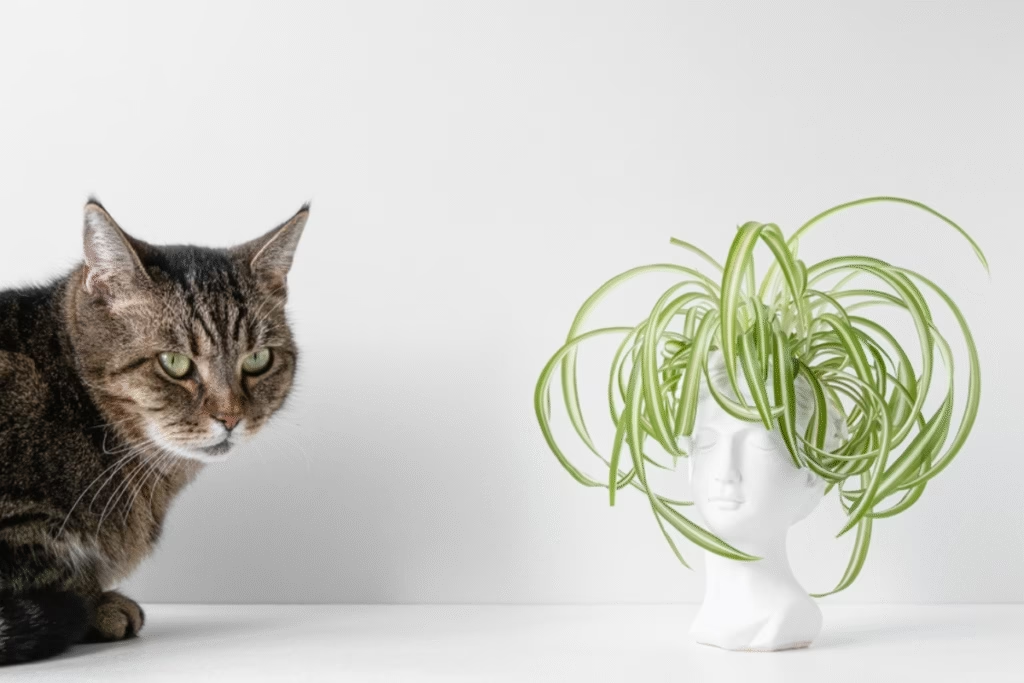
What Houseplants Are Toxic to Cats?
If your cat loves nibbling on leaves, keep these toxic troublemakers out of your home:
- Lilies – These aren’t just pretty—they’re deadly. Even the pollen or vase water can shut down your cat’s kidneys.
- Sago Palm – Looks harmless, but it’s one of the worst. Contains cycasin, which can cause sudden liver failure.
- Daffodils – Bright and cheerful, but even a small bite can lead to vomiting, shaking, and weird heart rhythms.
- Dieffenbachia – Also called Dumb Cane. If your cat chews it, their mouth will burn like crazy and they might drool or gag.
- Kalanchoe – These little succulents can mess with your cat’s stomach and even cause their heart to beat irregularly.
- Chrysanthemums (Mums) – Not super deadly, but they’ll definitely upset your cat’s stomach and make them wobbly.
- Lily of the Valley – Tiny flowers, big problem. They can slow your cat’s heartbeat or trigger seizures.
- Cyclamen – The roots are the worst part. One bite and your cat could be throwing up or struggling with heart issues.
- Snake Plant – Stylish, yes. Safe, no. Causes nausea and vomiting in cats—just not worth the risk.
- Azaleas – Beautiful but brutal. A few leaves can mess with muscles and cause tremors or even heart failure.
Related Post for Pet Owners: Reasons Why Are Dogs Better Than Cats | Pets Combat
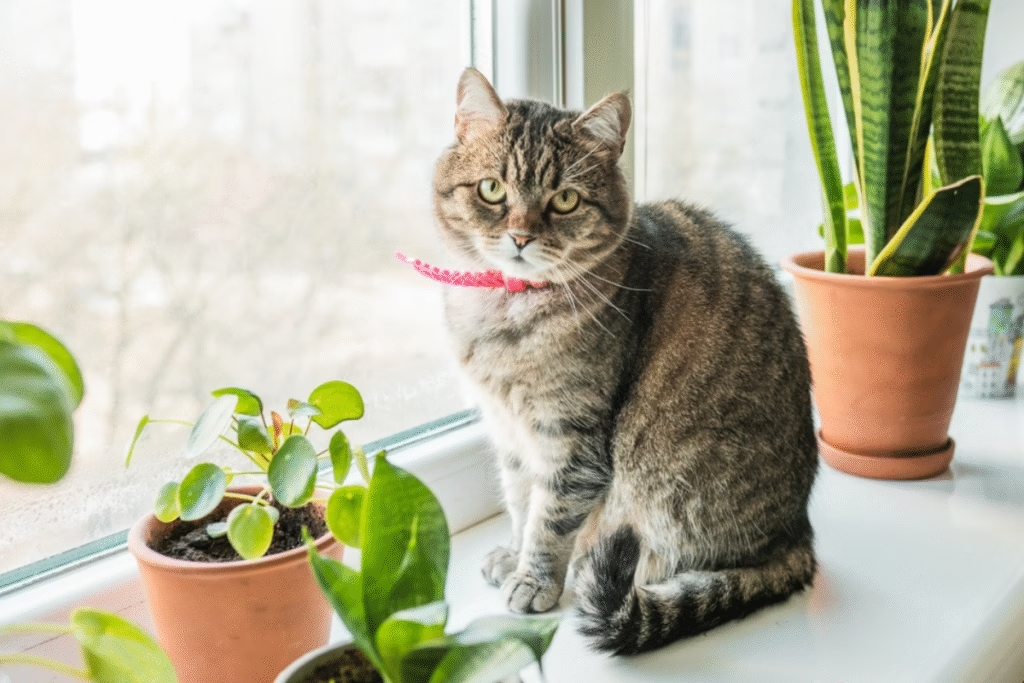
Wrapping It Up: A Home That’s Green and Safe
If you’ve got pets and love plants, you don’t have to pick one over the other. Just bring in a few pet-safe plants, and suddenly your living space feels calmer, safer, and a whole lot more alive. It’s not just about keeping things alive—it’s about actually flourishing. You’re building a sustainable home environment where your lively pets and greenery can thrive together to creat joyous home feelings.
When you combine smart choices, real-life lessons, and a little expert advice, you’re not just decorating—you’re creating a lifestyle that feels intentional and alive. So go ahead, bring some confidence and creativity into your space. Let it reflect natural beauty and make room for easy cohabitation with your pets.
Related: Is Cordyline Toxic to Cats?



